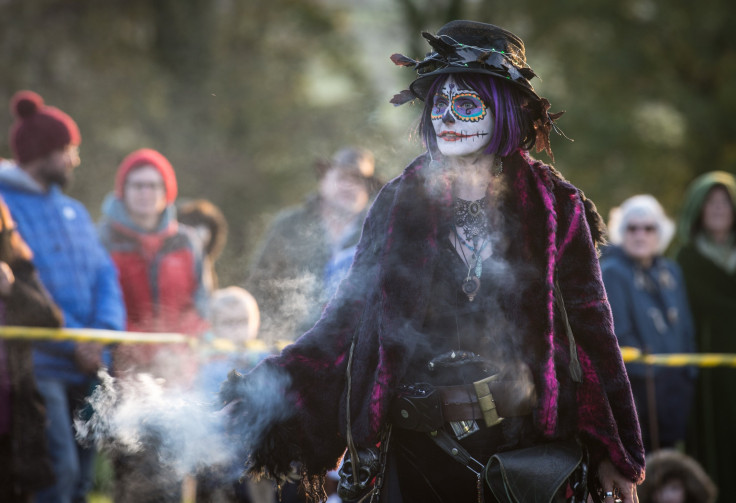Samhain 2018: 15 Facts About The Celtic Celebration

Hundreds of years ago, Halloween was not observed, and instead, Samhain, a pagan festival was celebrated. Pronounced “Sah- win” or “Sow-in,” it was a two-day Celtic festival.
It was celebrated as the New Year, and also the day when the spirits of the dead returned to the Earth. In remembrance of the festival, here are 15 facts about it.
- The word “Samhain” is a Gaelic word which refers to the end of the summer.
- The Pagan festival was one of the four major Celtic seasonal festivals, along with Imbolc, Beltane, and Lughnasadh, according to Useless Daily. It used to be celebrated around 2,000 years ago in regions which now include modern-day Ireland, Scotland, Wales, England, northern France, and the Isle of Man.
- It was considered “the witches New Year” by some modern Pagans, while others think of it as the end of the year.
- It usually starts from sundown Oct. 31 until the evening of Nov. 1. According to reports, it takes place between the autumn equinox and the winter solstice.
- The day was considered a “Sabbat” to honor ancestors and the deceased, according to About Religion.
- To celebrate the day, many would light bonfires and scare away ghosts or spirits by dressing up in costumes in a similar fashion to Halloween.
- Other rituals surrounding the day included healing, dancing, thanksgiving and honoring the dead
- According to Celtic beliefs, on the evening prior to their New Year, the “veil” which separated the world of the dead and living becomes thinner.
- People set aside food for their ancestors and other protective spirits that may visit at night. They also conduct rituals honoring the dead.
- They also believed the presence of returning spirits on the night was helpful to Celtic priests “the Druids.” People believed it helped the Druids to predict the future.
- On the night, Celtic priests built huge bonfires, practiced divination rituals, and conducted rites to keep ghouls at bay. They did not keep written records of the practices and hence, many of these rituals still remain shrouded in mystery.
- The day was also the third harvest festival of the eight Witches Sabbats and to commemorate it, crops were burned and animals were sacrificed to deities.
- Throughout history, the church campaigned for many years to stop people from celebrating Samhain/ Halloween. They wanted the holiday to be observed as All Saints’ Day instead.
- Halloween’s most common traditions were mostly inspired and taken from Samhain festival roots, such as carving pumpkins and turnips, bobbing for apples, bonfires and dressing up.
- At first, it was believed magical creatures including witches, demons and fairies roamed around the Earth on Samhain and claimed the food and drinks which were offered. But somewhere down the line, people started to dress up in costumes and taking the food for themselves. They even started to perform antics and tricks in exchange for the food. This practice evolved into trick or treating.
© Copyright IBTimes 2024. All rights reserved.
Join the Discussion





















